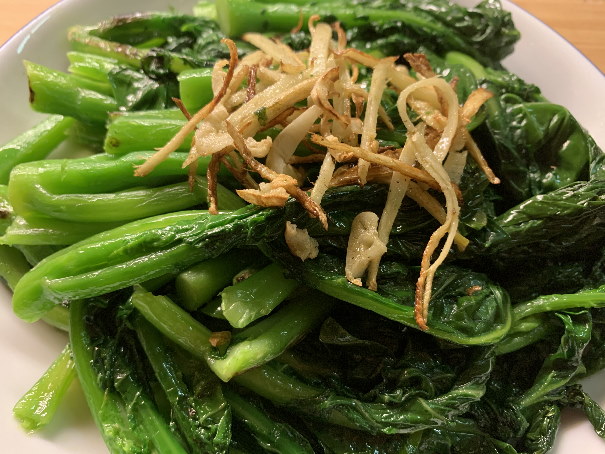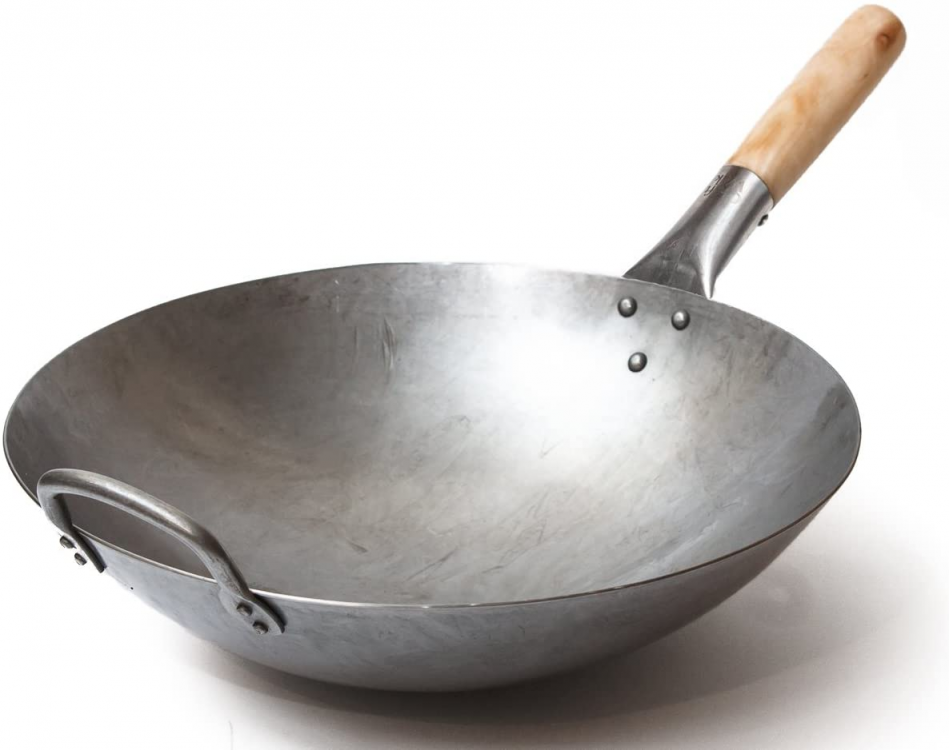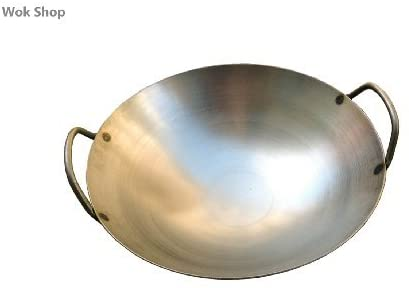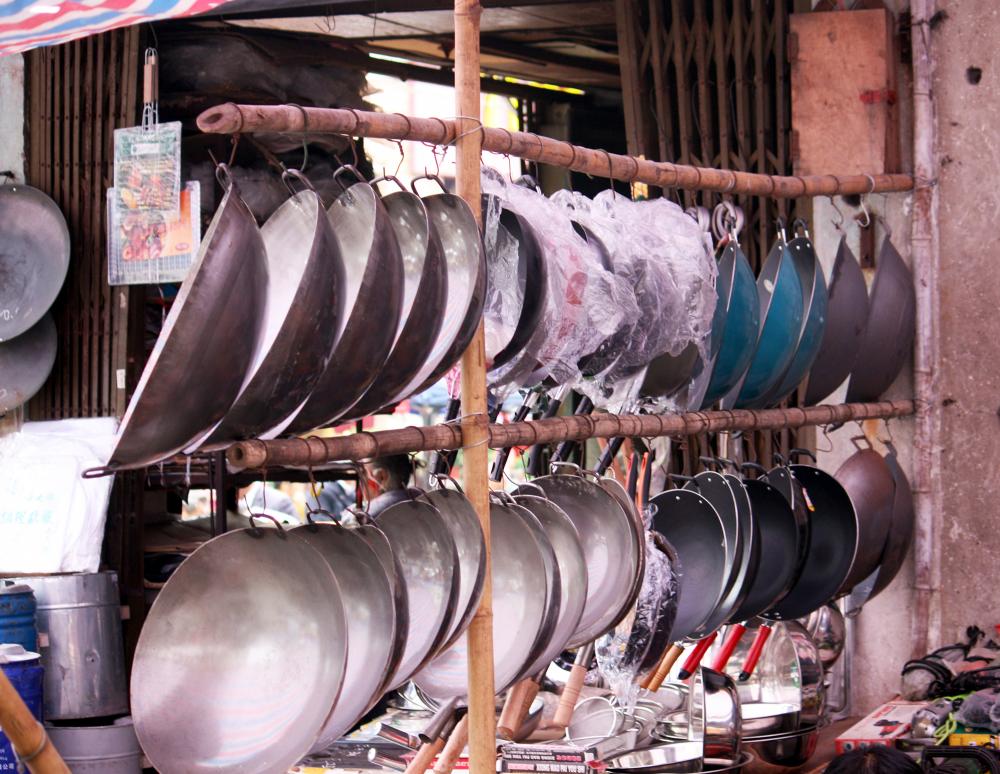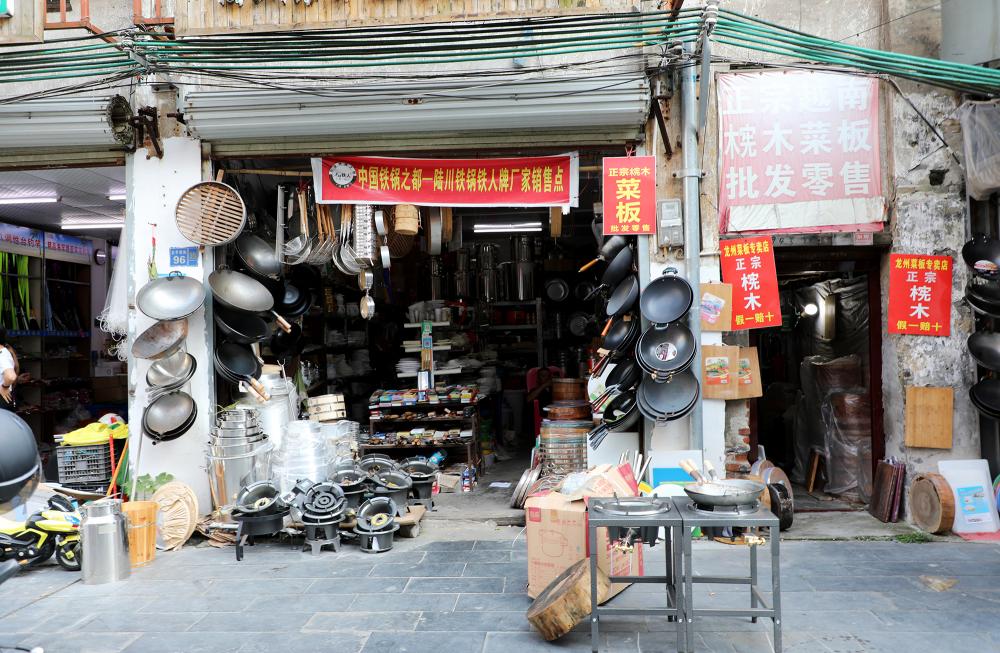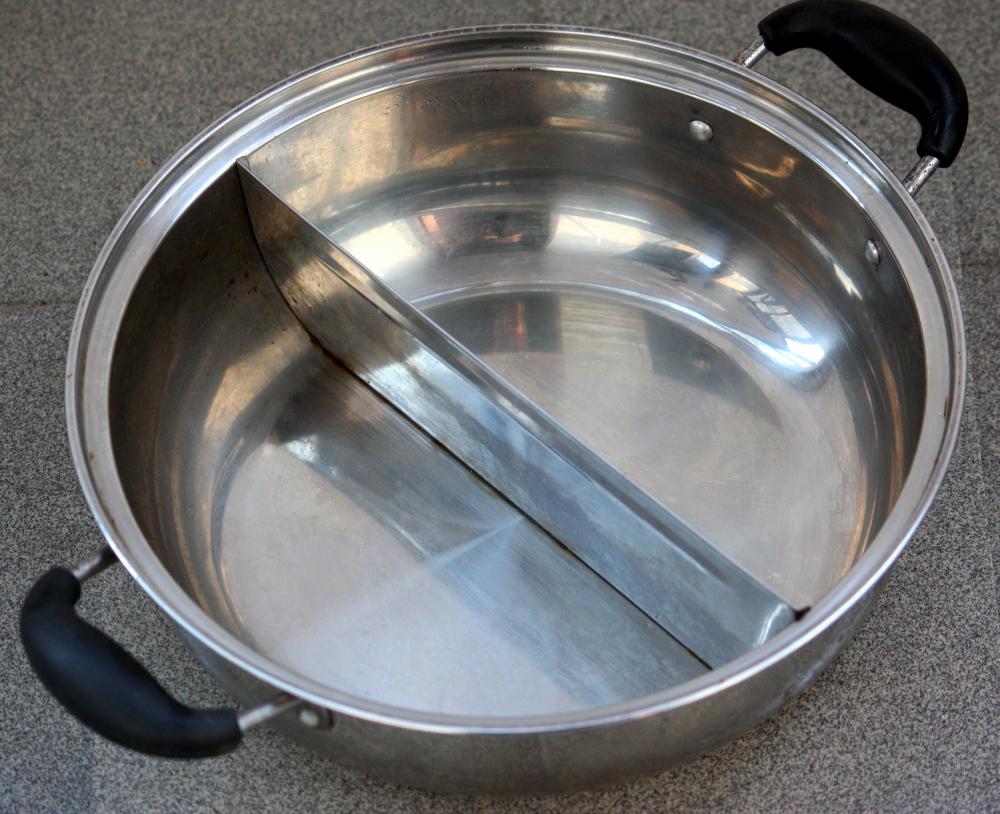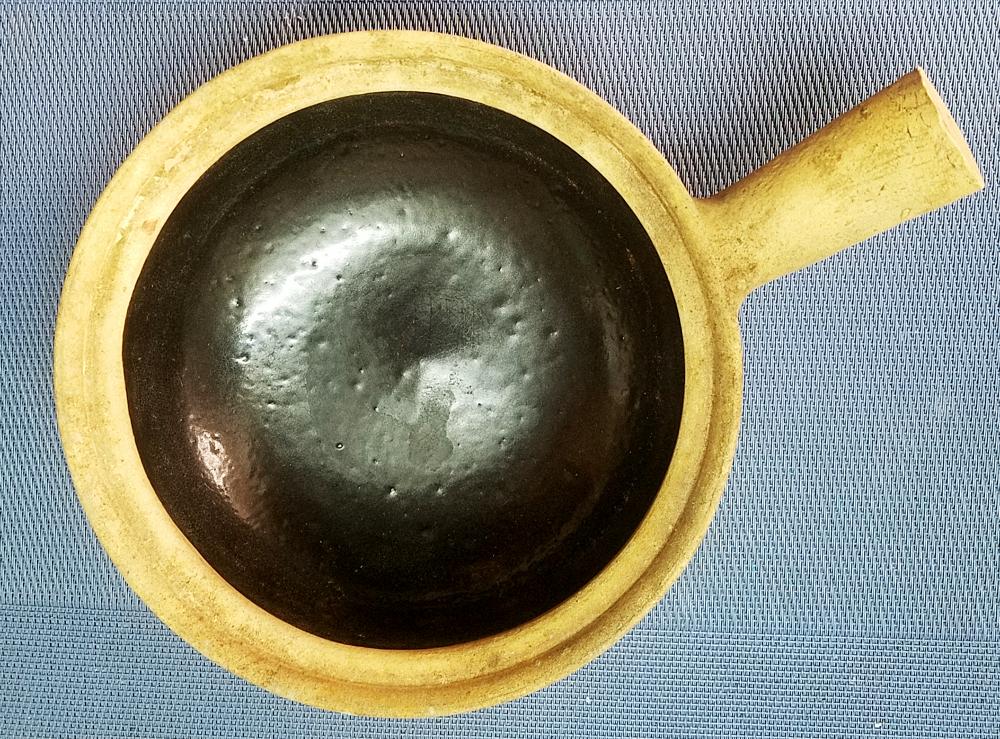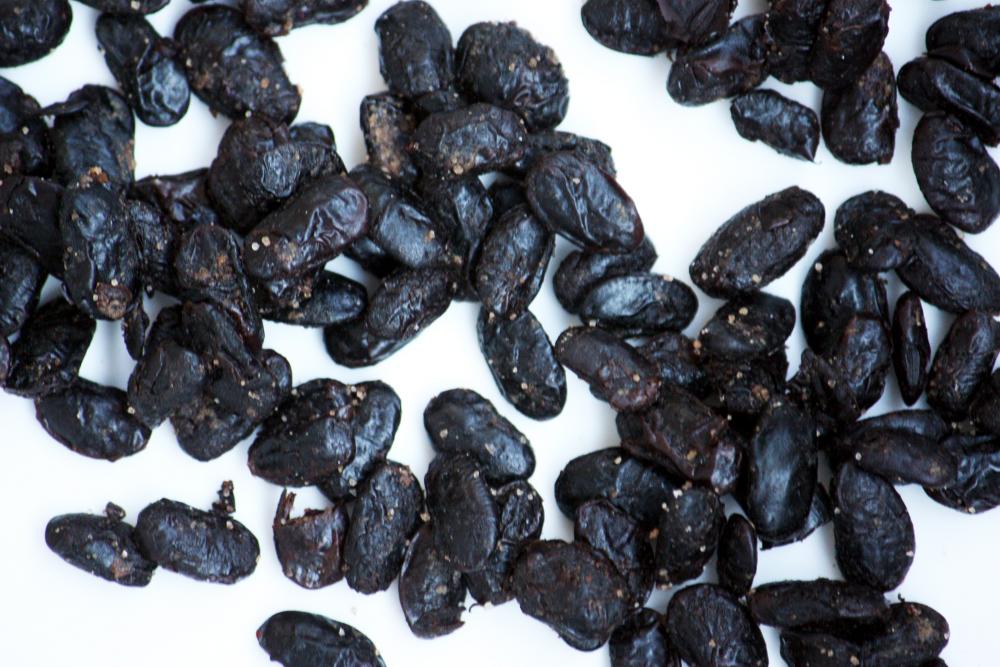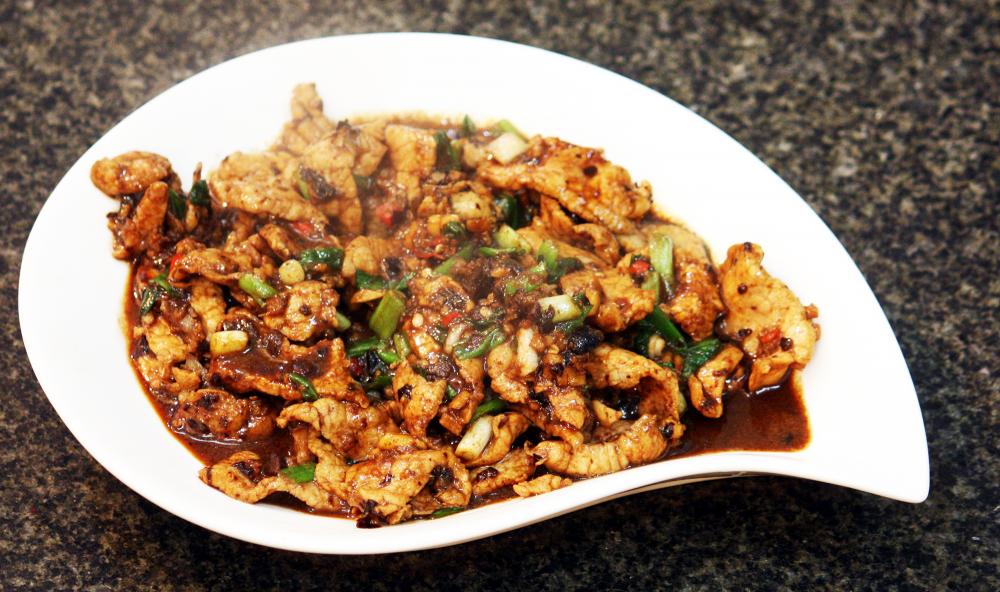Search the Community
Showing results for 'wok'.
Found 5,150 results
-
I use a wok scoop. I'd say the egg is around 75% cooked, but not fully. Next time, I'll take photograph.
-
How do you get a semi-liquid egg out of the wok? I cook my egg first in the wok, like a thinnish pancake, remove as soon as it is removable,, cut into pieces, then add back at the very end.
-
I'm sure he will, and I'm no @liuzhou, but from the start I learned to make the egg into a sort of omelet in the wok first, remove it, proceed with fried rice, and add egg back at end.
-
Steamed oyster sauce seasoned chicken with Chinese mushrooms and Chinese sausage. There was quite a bit of juice in the bowl, and it was so good with jasmine rice. I kept going back to the rice pot, scrape up a spoonful of rice and scoop up just enough juice for a good mouthful. Blanched baby gai lan, then a quick swirl in the hot wok with oil. Topped with a pile of ginger, chopped garlic, and a drizzle of sesame oil. I can make a meal just with this vegetable!
-
Also, to echo @liuzhou, since it was brought up - in all the food I ate in Sichuan, nothing had that Canto-tasting "wok hei" and pretty much every dish I ate wouldn't require a high-octane burner.
-

Appliance You've Purchased But You Use the Least (and probably don't need)
weinoo replied to a topic in Kitchen Consumer
Wok Hei! -

Appliance You've Purchased But You Use the Least (and probably don't need)
btbyrd replied to a topic in Kitchen Consumer
The pasta attachments for my KitchenAid. I couldn't justify the expense myself, so put them on my Amazon wishlist a couple years ago with the intention of upping my ramen game as well as making ravioli on a semi-regular basis. It's all still in the box. On a related note, I also have a lovely brass pasta wheel and a gnocci paddle that have never been used. Ooh! Also my high output wok burner, I'm sad to say. -
Ok so I googled grilling bag. Cheap - how re-usable and cleanable? used to have one of those wok kinda pans with holes for grilling smaller bits of vegetable. But had to keep moving it around to avoid hot spots/burn.
-
When I purchased my first wok, way back in the previous century (okay, 1977 or so), I don't even think they offered one-handled ones. I only remember seeing the two loop handles, carbon steel. But I could be misremembering.
-
Please correct me if I'm wrong, but I'd assume that the 2 loop handled wok is mainly used for deep frying, boiling or steaming. Unless the wok is HUGE, in which case it's not going to be picked up to toss the food anyway - in which case the two loop handles would be fine for stir frying since really they just stay out of the way until you want to move the wok to a new location.
-
I don't think it's exactly a myth about needing high BTUs, but more heat is better. I cooked for many years with a wok on a so-so average stove and it was okay, but then I got a Viking. The flame is big, although I would have to go through stacks of old manuals to locate the original specs re the BTUs. The stove has heavy cast iron grates and I have an optional cast iron wok grate that I can switch in as needed. Clearly I'm not getting the kind of heat they get in commercial wok kitchens, but my wok gets hotter than on any other stove I've ever used, and that seems to be a good thing. The wok is carbon steel, relatively heavy, with one long wooden handle. The ones with two short loop handles don't seem very practical, but I suppose it's about what you are used to. Don't those handles get awfully hot? I purchased mine when I lived on the edge of SF Chinatown about forty years ago and I use it at least once a week. I think of it as being a very typical round bottom shape. No longer lovely, but at this point it hasn't changed its venerable look for years. I hope it lasts the rest of my life.
-
Well, my ocular talents are on a level with yours. One day I'll go back and check, but it's not a part of town I normally frequent. Most people, in my experience, do use the long handled style. Both my woks are so designed. It tends to be called the Beijing style. I forget what the other kind with two loops is called - the impractical kind?
-
Now you're really confusing me! Looking more closely, maybe it's just a sort of frying pan? Does anyone use the one handled wok at home, or are they all pretty much with the two loop handles?
-
The red handled things aren't woks. I forget what they are but not woks.
-
-
The shape of wok worked well with old technique of thin cast iron making as well as hand making. Long time ago when I was visiting China, I have seen how steel wok making with using only one tool, a hammer. workers could shape a round disk of steel into a wok quickly without years of experience. Interestingly, the wok shape also worked perfectly with old irregular shaped clay wood fired stoves or any shaped coal, charcoal stoves. It always stayed level for cooking. Truly "Form Follows Function." (FFF), "Less Is More". dcarch
-
Actually, you can. I have done so, just not stir-fried. As I said, you can cook almost anything in it. 95% of the lunches and dinners I post here are wok-cooked. Chinese, Italian, Middle-Eastern, British, French, Indian, Greek et al.
-
Yea, I don't get the allure of the wok blaster for the home cook. I put it in the impractical and unnecessary bragging rights category. More important to have a decent wok that can handle and distribute heat evenly.
-
Ming Tsai of Simply Ming ( PBS ) and several local restaurants very very good ones had an Induction Hob for a special Wok on one of his early seasons of " Simply Ming. he has also cooked in a few Chinese Restaurants in China on those massive extremely hot rest.woks. he only used the induction wok set up a few times. I could tell the wok got very very hot the hob was concave and perfectly fit the wok that was pared to it. Im guessing he took it off the show as " Viewers like You " were never going to get one for their home kitchen cost i believe at the time for the set up : 10 - 15,000 USD. plenty of hei for 15 K !
-
I will openly admit to buying into the myth about a wok needing high BTUs. Just putting my brain into gear should have dismissed the myth as logically unlikely outside of a restaurant setting. But apparently I didn’t take the time to think it through. It is regrettable because otherwise I might have used my wok much more frequently. It always struck me as an extremely well designed implement. Don’t do much cooking anymore so my wok is acquiring a lovely patina of dust. But I still have it so who knows.
-
10. You need a wok and high BTU burner to cook Chinese food. I've muttered and mumbled about this issue several times before elsewhere on this site, but it really belongs here, so... First, you need neither, although a wok (炒锅 - chǎo guō, literally 'fry pot', usually shortened to just 锅 - guō) is a very useful and versatile tool in the kitchen. Ideal for stir frying, deep frying, boiling, steaming, smoking etc. In many Chinese homes, the wok may well be the only utensil available. I use one in 95% of my cooking. Clay pot 沙锅 That said, not all Chinese dishes use woks. Clay pots (沙锅 - shā guō) are often used as are pressure cookers, rice cookers and these hot pot dishes. Stir fries can be done in regular frying pans/skillets, but woks are better. Their high sides enable better, more thorough stirring. Wok Burners There are those who will tell you that you can't use a wok successfuly on a regular stove. That will come as a shock to the millions of people across China cooking lunch right now in their woks using regular stoves. I have never seen anyone anywhere in China using a high-temperature wok burner outside of a restaurant. "But you won't get the 'wok hei' without a high temperature," they complain. Well, here's a secret. Few people care. Few people even know what 'wok hei' is. The expression 'wok hei' (鑊氣) is Cantonese, a language spoken by around 70 million people (most of whom are not even in China), whereas Putonghua (in English, Mandarin) is spoken by around a billion! So, it is really only important in Cantonese cooking. Even in Cantonese speaking areas, people don't use special wok burners domestically. Elsewhere, restaurants use high temperature cooking for stir fries as it is much quicker - obviously desirable in a busy restaurant or canteen. Until recently, I didn't even know where I could have bought a high BTU burner in this city, but found one shop in an area selling industrial equipment to business and restaurants etc.. If you want to emulate Cantonese restaurant food, then go ahead and get yourself one. Here, people just go to the restaurant or make do at home on their regular gas stoves.
-
Well, I mean, I use them as a sub for cast iron, except it's glassy-smooth from the factory (once you scrub the epic amount of coating crap off them). For thin carbon steel, I have a wok
-
So...does every stir fry taste porky? I'm used to using peanut oil exclusively. For a stir fry sauce I might add a bit of pork or ham broth or chicken broth depending on what's in the wok.
-
4. Black Bean Sauce I searched the supermarkets to find a bottle/jar of Lee Kum Kee Black Bean Sauce to take a picture to decorate this comment. Not in the least to my surprise, I failed to find any, or any other brand. Although some LKK products are available, not that one, for the simple reason that no one wants it. Black bean sauce is very popular, but not from a bottle. The sauce is made fresh in the wok each time, using the ingredients individually. Fermented black beans or 豆豉 (dòu chǐ ) are easily found, cheap and keep for months. They are fried along with the main protein or vegetable. Garlc, ginger, soy sauce, etc are also incorporated - i.e all the things in LKK's bottle except the "caramel color, modified corn starch, xanthan gum." Pork in Black Bean Sauce
-
This is what I use. Germs don't stand a chance, plus I get that great wok hei aroma and taste. But seriously, folks, I just use lots of plain water.



